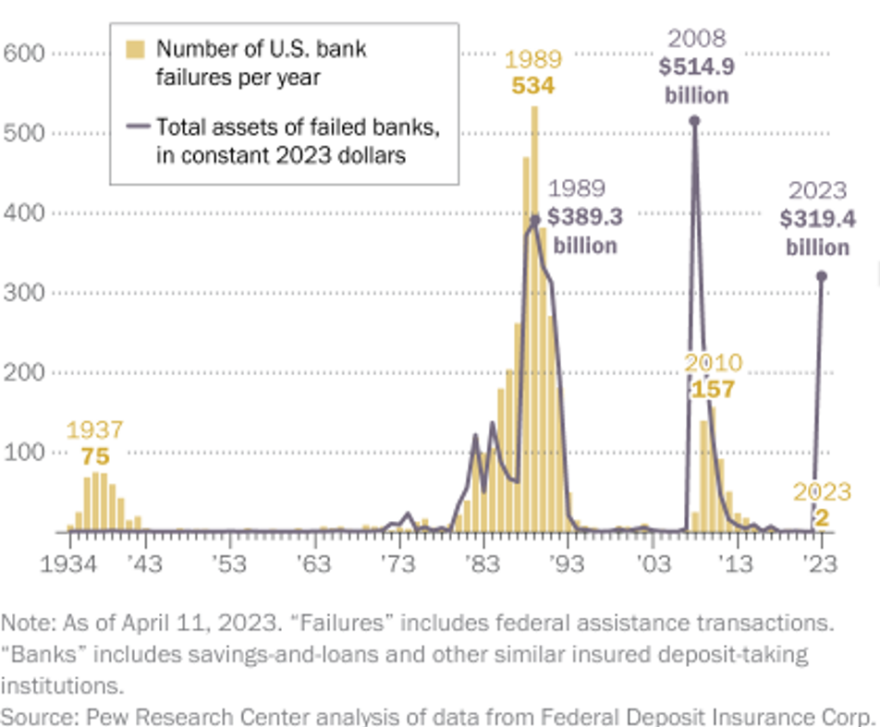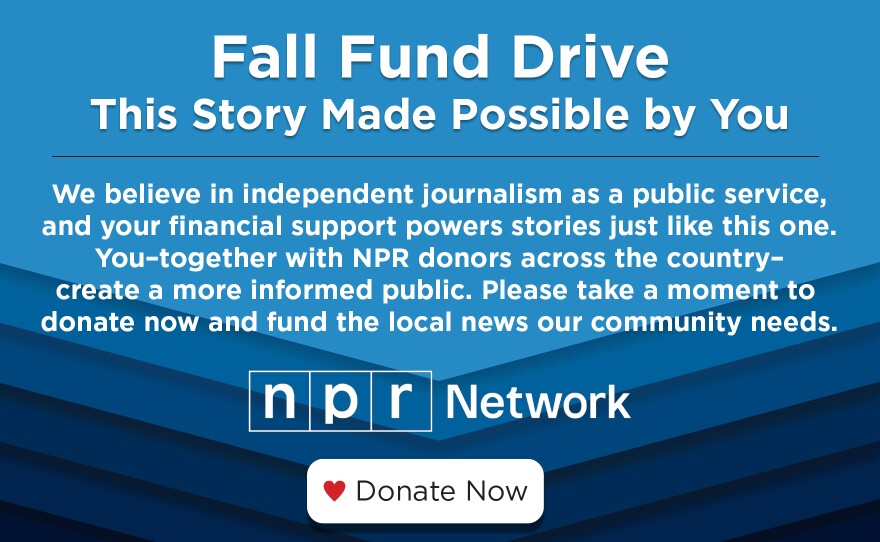There are likely to be more bank failures in the next couple years. That’s according to Ajay Samant, dean of the College of Business at Illinois State University in a WGLT interview.
Two recent failures of financial institutions already have totaled $319 billion. Silicon Valley Bank is the second largest bank failure in U.S. history. New York-based Signature Bank also was taken over. The collapses of just those two banks amount to about two-thirds of the total losses in 2008-09 when 157 banks failed, according to a Pew Research Center analysis of data reported by the Federal Reserve.
Contributing factors include interest rate hikes by the Fed and problematic loans made by the at-risk banks, said Samant. Many banks have invested in long-term bonds. When interest rates rise, the value of bonds falls. Many are down by 20%, Samant said, meaning banks have lower reserves than optimal.
"They are undercapitalized in that the bank owners have not put up as much of their own money as they should into the bank. And they are overexposed in that they have taken on risks which they probably should not have. These are the main reasons we may continue to see some more bank failures," said Samant.
Banks now claim they will hold bonds they own till maturity, which makes them less liquid and in the case of Signature and SVB led to failures.
"When depositors try to withdraw their money, the banks have to sell the bonds that they hold and the money was simply not enough to repay the deposits," said Samant.
Silicon Valley Bank specialized in tech sector loans and Signature Bank in cryptocurrency.
Samant said the recent Fed decision made on a weekend to guarantee all deposits in two failed banks instead of the standard $250,000 FDIC limit calmed the situation for now, though he said it also signaled there are concerns about the stability of the system.
“What the Fed is afraid of is a perfect storm, and the perfect storm will happen if interest rates rise and depositors panic at the same time,” said Samant.
Misplaced incentives
Ironically, the government measures that help create confidence in the system — deposit guarantees — can contribute to destructive behavior by financial institutions.
“What is wrong is that we have unfair incentive structures in the banking industry,” said Samant. Banks are in a position to take risks with their loans. If they profit from these risks, then they retain the profits. If they are in financial trouble, the deposit guarantee kicks in and somebody else foots the bill — the federal government, in this case. That is where the incentives are misplaced.
Rising interest rates are a curb on economic activity because as interest rates rise, as the bond assets of banks form, banks are less willing to make loans, particularly loans that carry higher risk, said Samant. That impacts particularly small and medium-sized businesses, because by virtue of small size, the business is riskier, said Samant.
This suggests any potential recession caused by Fed efforts to curb inflation could be deeper or more sustained because of the bond situation than earlier thought, Samant confirmed.
“A recession could be quicker, more imminent, and deeper than what was originally thought. Now, the Fed is of course aware of this, and they have started to modify their interest rate increase policy,” said Samant.
Recent interest rate hikes have been smaller than originally planned. Some Wall Street analysts predict the Fed also will go back to cutting interest rates, though Samant said that isn't likely.
“The problem is that inflation is still alive and well. It was 9% last year, at this point in time, it may be around 6%, which is still considerably higher than what the Fed would like to see,” said Samant.
He said the Fed also will carefully monitor economic activity and key variables like unemployment rates and whether large layoffs continue at big businesses.
“That would really lead to a substantial decline in consumer demand. And that could very well take the country into a recession,” said Samant. “I would expect unemployment to creep up over the next few years. Whether inflation will continue at present levels or not is difficult to see at this point in time.”
Samant said everyone is waiting and watching to see how the economy moves in the next year. Will it be stagnant? Will inflation come down enough to satisfy the Fed? Will public confidence remain high? Samant said ultimately consumer sentiment drives the U.S. economy.



